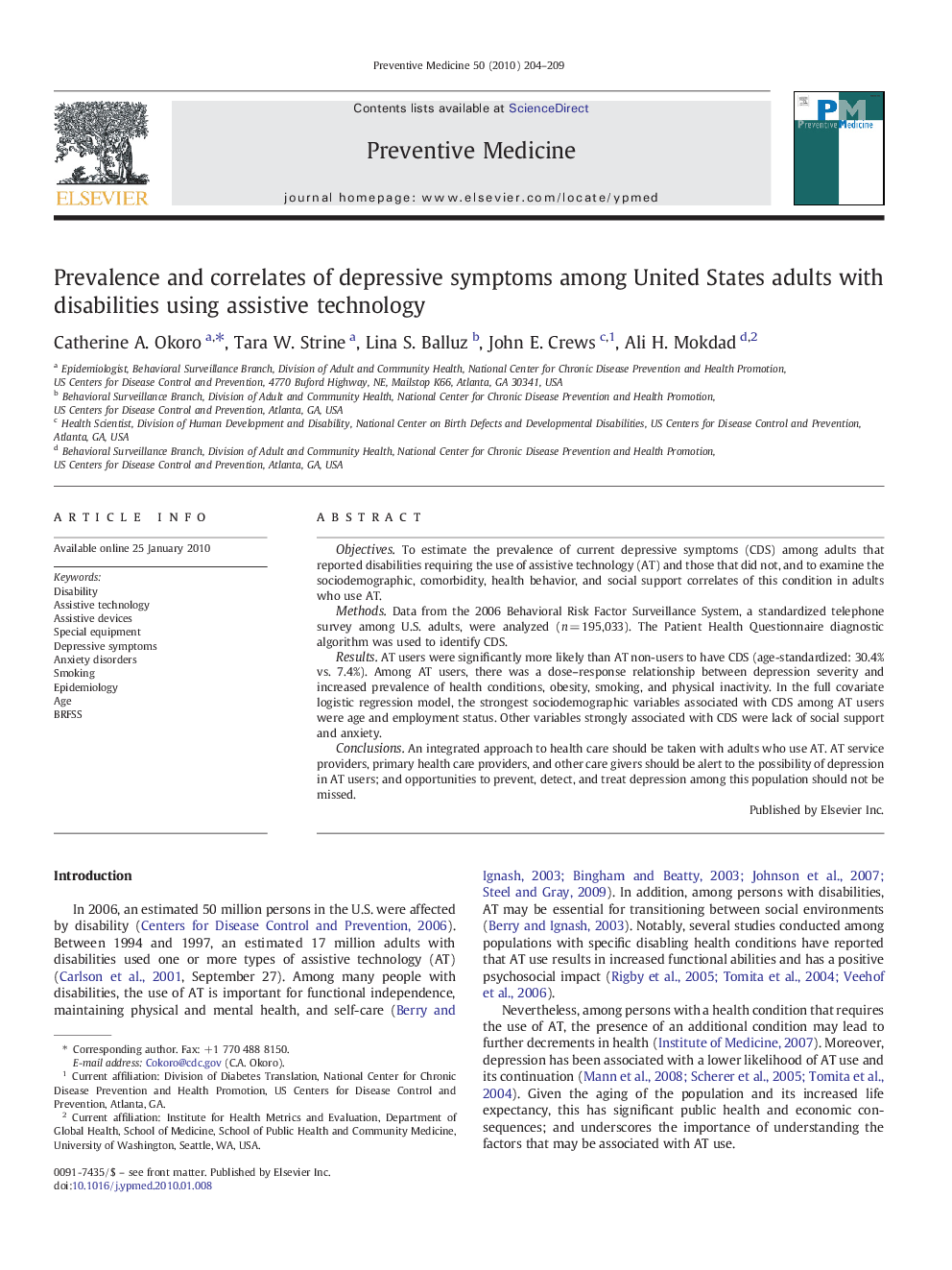| Article ID | Journal | Published Year | Pages | File Type |
|---|---|---|---|---|
| 3101162 | Preventive Medicine | 2010 | 6 Pages |
ObjectivesTo estimate the prevalence of current depressive symptoms (CDS) among adults that reported disabilities requiring the use of assistive technology (AT) and those that did not, and to examine the sociodemographic, comorbidity, health behavior, and social support correlates of this condition in adults who use AT.MethodsData from the 2006 Behavioral Risk Factor Surveillance System, a standardized telephone survey among U.S. adults, were analyzed (n = 195,033). The Patient Health Questionnaire diagnostic algorithm was used to identify CDS.ResultsAT users were significantly more likely than AT non-users to have CDS (age-standardized: 30.4% vs. 7.4%). Among AT users, there was a dose–response relationship between depression severity and increased prevalence of health conditions, obesity, smoking, and physical inactivity. In the full covariate logistic regression model, the strongest sociodemographic variables associated with CDS among AT users were age and employment status. Other variables strongly associated with CDS were lack of social support and anxiety.ConclusionsAn integrated approach to health care should be taken with adults who use AT. AT service providers, primary health care providers, and other care givers should be alert to the possibility of depression in AT users; and opportunities to prevent, detect, and treat depression among this population should not be missed.
